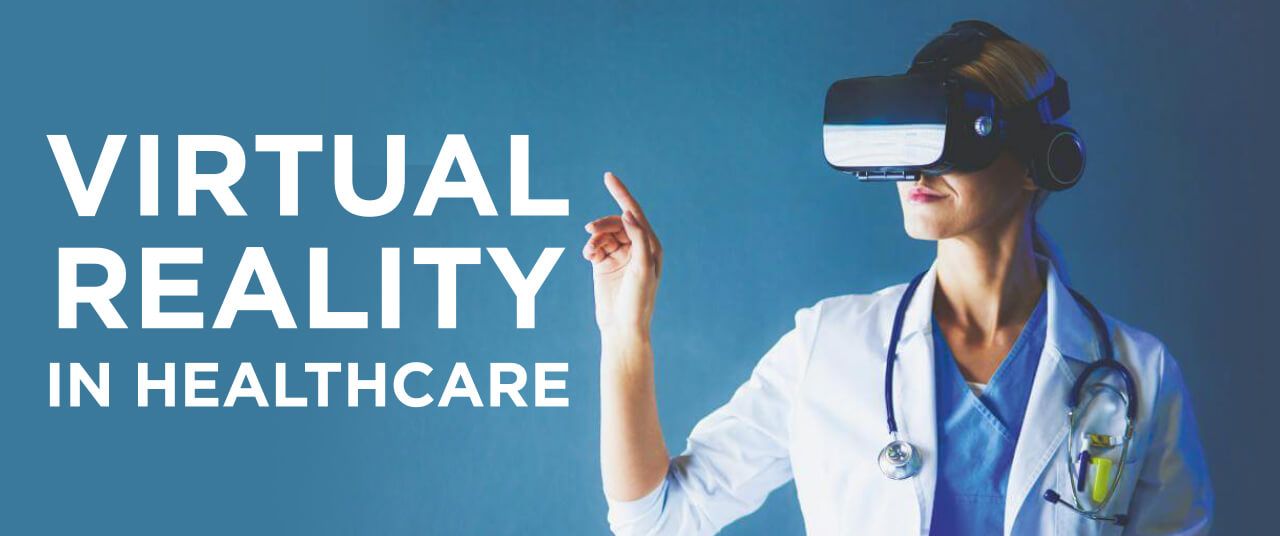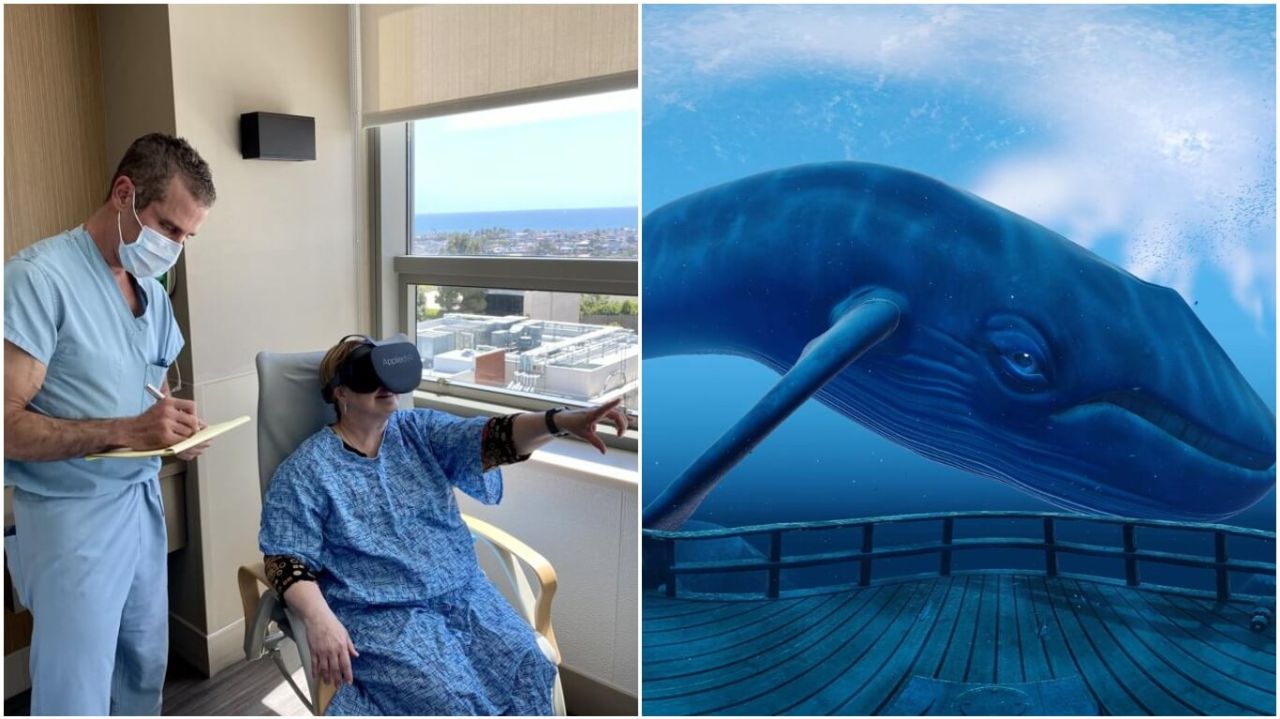Virtual Reality (VR) in Healthcare: Benefits and Best Practices

The COVID-19 pandemic greatly hastened the adoption of virtual technology in the healthcare industry. Virtual healthcare services became a necessity for millions of people as efforts to slow the spread of coronavirus disease sharply limited face-to-face visits.
In 2020, the global market for VR in healthcare was estimated at $336.9 million. It is projected to grow at a CAGR of 30.7% to reach $2.2 billion by 2024.
Healthcare start-ups come up with fresh ideas every day on how VR can be used for medical projects. They are ready to invest in VR as this technology offers a burgeoning variety of benefits.
In this article, we’ll discuss how VR technology benefits healthcare organizations and how it can be adopted in the day-to-day work of a medical team.
Here’s What We’ll Cover
- VR for Medical Training
- VR for Surgery
- VR for Pain Management
- VR for Rehabilitation
- VR for the Treatment of Autism
- Using VR to Fight Memory Loss
- VR for Patient–Physician Consultation
How VR in Healthcare Benefits Medical Organizations
Here are some benefits that companies in the healthcare field may experience by implementing VR technology.
VR Enhances Medical Training
VR technology provides medical students with an immersive first-hand view of any medical procedure even if they are not present in the operating room. With a VR headset and a controller, students can step into an immersive virtual representation of actual surgical procedures. Any virtual learning session can be guided either by a tutor, who is also connected to the VR app, or by a virtual tutor controlled by the AI algorithm.
Additionally, VR solutions improve and hone the student’s communication skills as they use AI to interact with virtual patients.
VR significantly improves the quality of medical training while serving as a cost-effective method of educating a new generation of surgeons. Medical students can gain more experience without putting patients at risk.
For example, the VR ECG simulator app trains and evaluates medical personnel performing ECG procedures and ECG laboratory setup. The application consists of different training routines for the room setup and the performance of the ECG procedure itself. All processes and requirements for the exercises correspond to actual on-site conditions.
Another example is Trauma Anatomy, an app designed to train medical students and healthcare professionals. This VR platform enables students to train through dynamic and physiologically accurate patient trauma simulations.
VR Reduces Patients and Healthcare Professionals’ Risk
VR technology helps surgeons to work out the surgery beforehand while playing out various scenarios. They can optimize the sequence and prepare a course of action even for extreme circumstances. In this way, the operation will become more precise and controlled.
For example, Ghost Production’s Wraith VR Medical Simulation Platform enables surgeons to master surgical procedures in virtual reality.
Further, the VR app can be used to explain the surgery process to patients.
VR Offers Better Pain Management
VR pain management apps mitigate pain experienced by patients in effectively diverting their attention. After being immersed in the VR simulation, a patient can either become a part of an interactive experience or be transferred to a highly realistic environment with a soothing atmosphere.
For example, VR technology recently introduced by Hoag Hospital in Newport Beach offers patients the virtual experience of swimming underwater in the ocean while reducing pain and stress.

VR Enhances Physical Rehabilitation
VR is still in its early stages regarding rehabilitation practices. Yet initial results from pilots are highly encouraging and provide insights into the effectiveness of VR-based motor rehabilitation.
VR technology allows patients with different neurological disorders to execute actions they are not able to perform in real life due to their disabilities. It can provide individual treatment plans developed according to careful assessment and following case-by-case treatment goals.
Further, it improves a patient’s engagement and motivation with 3D virtual environments and video game–like tasks.
VR Helps in Treating Autism
People with autism face challenges in terms of behavior, social skills, and verbal and non-verbal communication, as well as sensory and attention-related difficulties. However, they also have unique identities and preferences just like anyone else.
For the moment, autism therapy entails in-person sessions. But VR can be adopted by therapists as one of the tools that helps people with autism to better communicate and connect with others and the world around them. VR technology can also be used to help others without autism to understand what living with the condition means.
VR Helps in Fighting Memory Loss
Alzheimer’s is one of the most difficult diseases to watch someone go through. A slow decline in mental faculties means patients gradually forget who they are and what was around them. With this troubling situation, it becomes crucial for neuroscientists to gain deep insight into the subject.
Researchers at the University of California, Los Angeles utilized VR, paired with a surgically implanted prosthesis, to study the brain activity of a patient moving through VR space. Essentially, the study data will help them to understand how a patient forms memories.
VR Improves Patient–Physician Consultation
Physician consultation is not always available in remote locations such as American Antarctic Research Stations. In such cases, adopting VR services allows doctors to provide consistent patient–physician communication. Additionally, it provides essential services like pulse examination and an understanding of emotional responses.
Some Final Thoughts
Today, more and more healthcare businesses are willing to invest in VR technology to receive the benefits it can bring. Implementing VR-based tools and devices can help healthcare organizations improve staff productivity and patient satisfaction.
VR solutions are providing new options to achieve desired outcomes in the healthcare domain. Currently, they focus on four main areas:
- Engaging education and training for medical professionals and students
- Treating patients with neuropsychological issues in an innovative way
- Acting as a potential tool for pain relief
- Providing therapy for people with chronic illnesses or disabilities
If you are ready to create VR immersive experiences, fill out the contact form, and one of our consultants will get in touch with you within 24 hours.
With rich expertise in the healthcare field and VR software development, our in-house team creates mind-blowing VR experiences across multiple platforms.





Shammy Peterson says:
It sure was interesting when you said that virtual reality allows patients to execute actions that they could not do in real life due to their disabilities. This is something that I will share with my brother because he wants to undergo physical therapy after getting into a car accident nights ago. His right leg has been in pain due to the accident, and he wants to recover fast. For sure, he can consider an at-home therapeutic virtual reality service within the week.